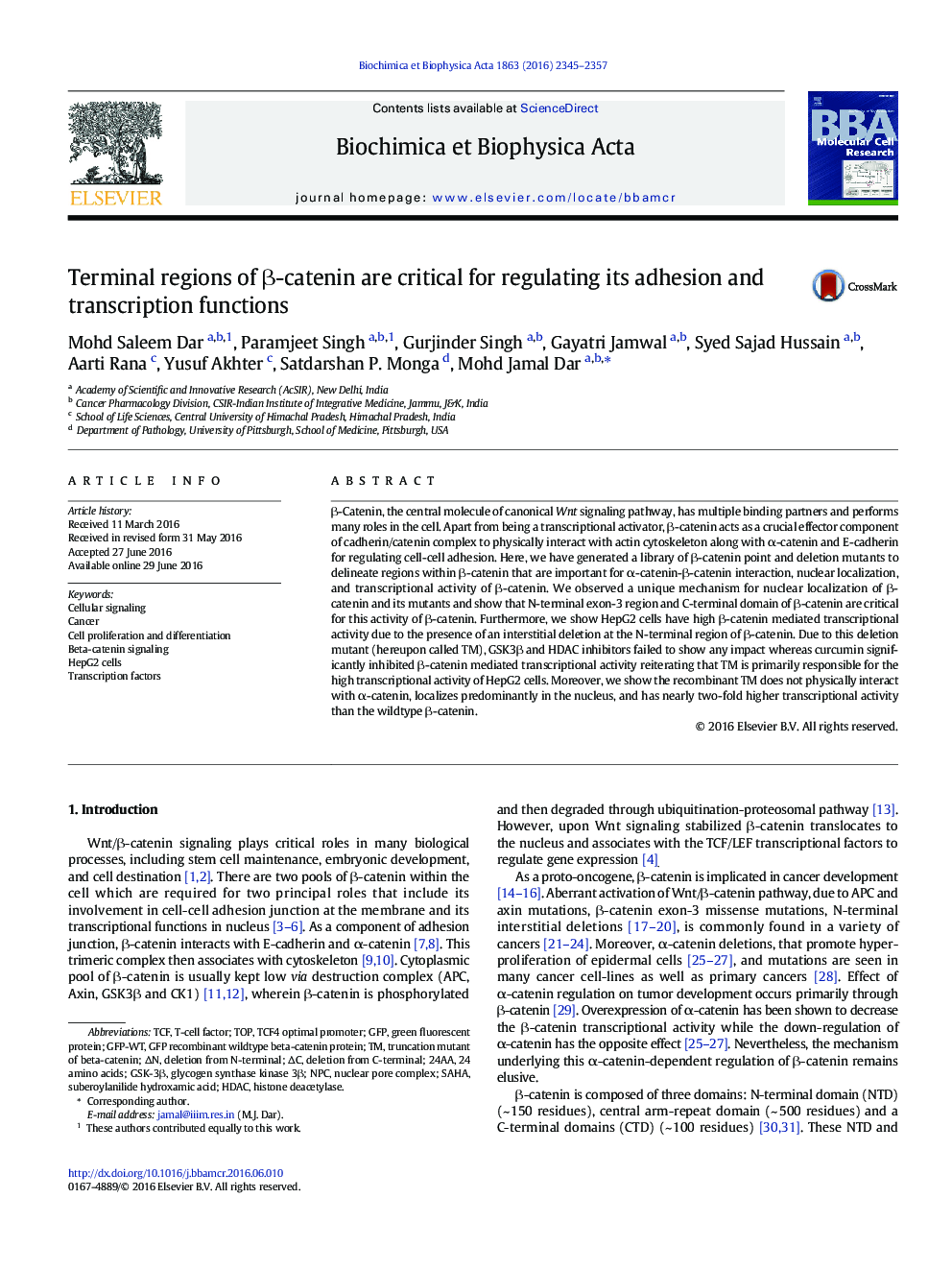| کد مقاله | کد نشریه | سال انتشار | مقاله انگلیسی | نسخه تمام متن |
|---|---|---|---|---|
| 1950426 | 1055630 | 2016 | 13 صفحه PDF | دانلود رایگان |

• β-Catenin and a panel of its mutants were analyzed for various activities of this protein.
• Among deletion mutants, TM showed maximum transcriptional activity.
• TM does not interact with α-catenin and localizes predominantly in the nucleus.
• A unique mechanism for nuclear localization of β-catenin and its mutants was observed.
• β-Catenin mutants show differential expression and activity which are unrelated to each other.
β-Catenin, the central molecule of canonical Wnt signaling pathway, has multiple binding partners and performs many roles in the cell. Apart from being a transcriptional activator, β-catenin acts as a crucial effector component of cadherin/catenin complex to physically interact with actin cytoskeleton along with α-catenin and E-cadherin for regulating cell-cell adhesion. Here, we have generated a library of β-catenin point and deletion mutants to delineate regions within β-catenin that are important for α-catenin-β-catenin interaction, nuclear localization, and transcriptional activity of β-catenin. We observed a unique mechanism for nuclear localization of β-catenin and its mutants and show that N-terminal exon-3 region and C-terminal domain of β-catenin are critical for this activity of β-catenin. Furthermore, we show HepG2 cells have high β-catenin mediated transcriptional activity due to the presence of an interstitial deletion at the N-terminal region of β-catenin. Due to this deletion mutant (hereupon called TM), GSK3β and HDAC inhibitors failed to show any impact whereas curcumin significantly inhibited β-catenin mediated transcriptional activity reiterating that TM is primarily responsible for the high transcriptional activity of HepG2 cells. Moreover, we show the recombinant TM does not physically interact with α-catenin, localizes predominantly in the nucleus, and has nearly two-fold higher transcriptional activity than the wildtype β-catenin.
Fate of β-catenin wildtype and TM in HepG2 cells.Figure optionsDownload high-quality image (294 K)Download as PowerPoint slide
Journal: Biochimica et Biophysica Acta (BBA) - Molecular Cell Research - Volume 1863, Issue 9, September 2016, Pages 2345–2357